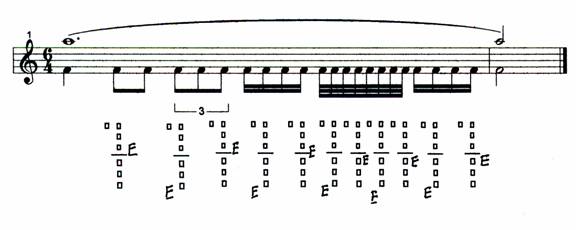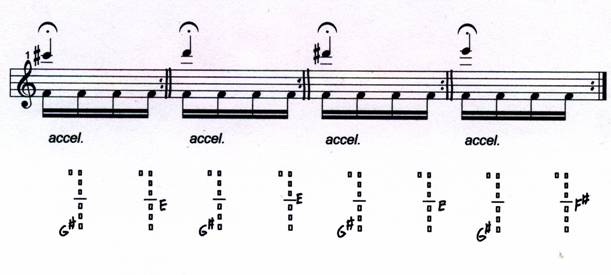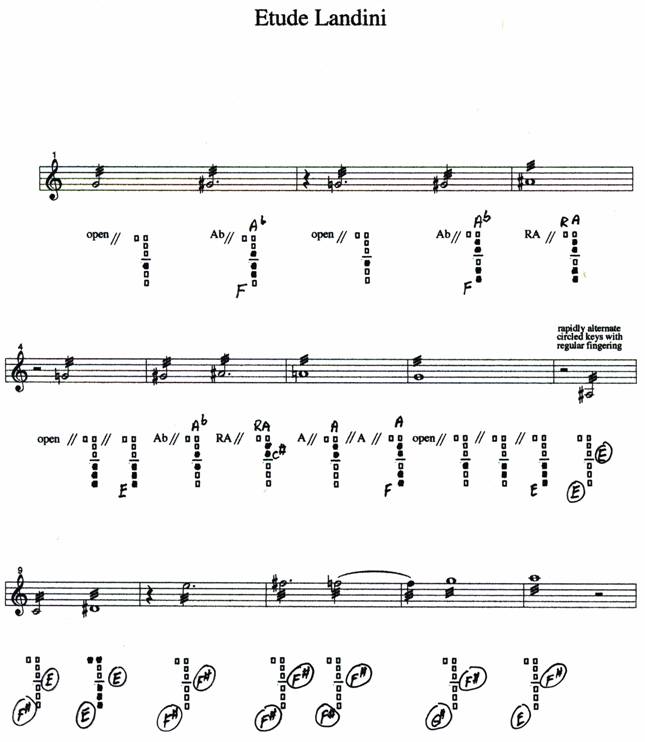| The Clarinet of the Twenty-First Century - E. Michael Richards |
CHAPTER 5 - Etudes & Exercises
Alternate Fingerings and Microtones: timbre contrasts of alternate fingerings
Different timbres of the same pitch on the clarinet are most conveniently achieved through alternate fingerings; embouchure manipulation alone will not work, since it will also affect pitch. However, altering timbre is not the only purpose of alternate fingerings. The artistic clarinetist of the late twentieth century employs different fingerings from standard fingerings in certain musical contexts, throughout the standard orchestral, chamber music, and solo repertoire.6 These contexts may require a slightly higher or lower pitch for reasons of intonation, a technically simpler fingering for a smoother legato, a less resistant fingering for an easier entrance at a soft dynamic level, or a more desirable tone color for better blend or portrayal of a particular musical character.
In music of the last twenty-five years, the expansion of timbral resources and sensitivities and of usable pitch nuances has become a primary compositional concern. However, in order to indicate (as a composer) and perform (as a clarinetist) alternate fingerings, one must understand the acoustics of the instrument. All pitches on the clarinet do not lend themselves to alternate fingering possibilities. In general, the pitches which utilize the longest length of tube have the smallest number of options; pitches below B3 and pitches between B4 and G5 have few or no alternate fingerings .
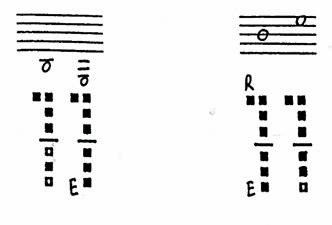
Pitches in the altissimo register have the most alternatives, since they can serve as partials to a number of different fundamentals.
The Landini “Konzertstuck” Etude focuses on subtle yet distinct timbre contrasts of alternate fingerings for pitches from all four registers of the clarinet. Like Carlo Alessandro Landini 's work for solo clarinet, Konzertstuck (1980), these alternate fingerings are used in unison trills (trills on the same pitch, or microtonal pitches around a conventional pitch). The number of fingerings for a particular trill ranges from two to four. Especially notable are the trills that use the alternate side keys controlled by the little fingers of both hands. It is possible to execute extremely fast trills in these cases by alternating left and right little fingers with the regular fingering (R, reg, L, reg), and some of these trills include additional percussive sounds. Trills in measures 15-7 involve microtonal pitches above and below the notated pitch, thus creating a wider sounding pitch complex. All of the trills in this etude should be practiced slowly first to gain evenness of technique.
The following exercise can help the clarinetist accomplish a fast and even trill using alternate side keys (E) – one can also apply this exercise to alternate F or F-sharp keys. (the lower notes – F3 – indicate the rhythm for the side E keys)
Exercise #12 (click on music for mp3)
By using more than one side key (with the little finger of alternating hands), the clarinetist can produce different subtle color changes. One should practice this first without playing – just watching the fingers move rhythmically with precise and economical motion.
Exercise #13 (click on music for mp3)
click on music for mp3 of Etude:
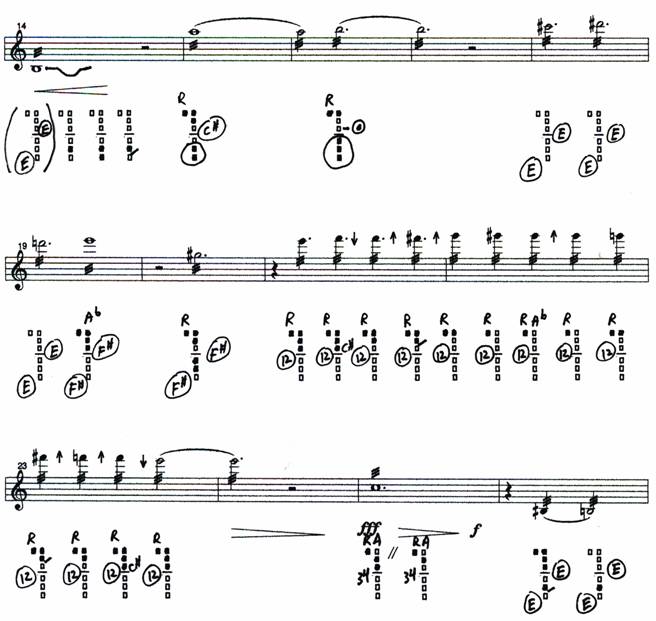

for information on how to see/hear more examples of timbre contrasts of alternate fingerings, click here
|
||
